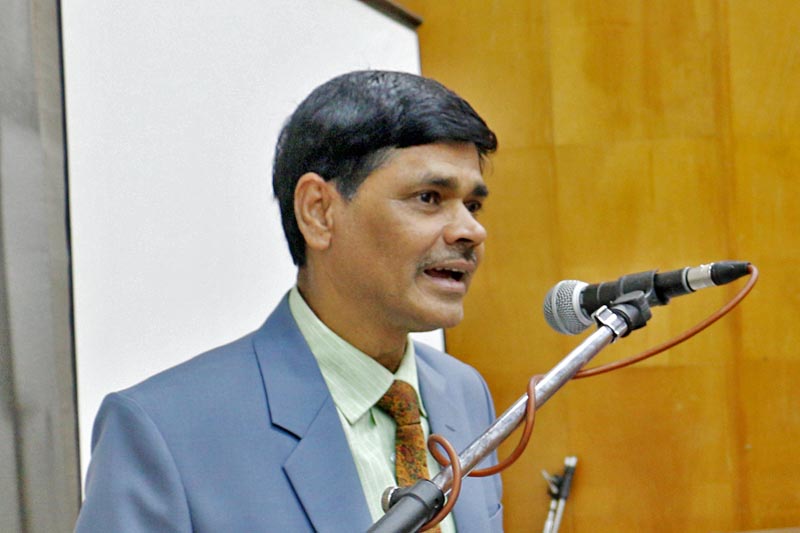CEC Yadav advises CDC on delineation
Kathmandu, August 3
Chief Election Commissioner Ayodhi Prasad Yadav said the Constituency Delimitation Commission should not delineate constituencies in a way that allows overlapping of rural municipalities and division of wards — the lowest unit of local levels.
Addressing an interaction on electoral constituency delimitation organised by Democracy and Election Concern Nepal here today, Yadav said both population and geography should be grounds for delineating electoral constituencies. Yadav said it would be very difficult to hold both provincial and parliamentary elections simultaneously. “If we have to hold both elections simultaneously, we will have to print seven crore ballot papers.
“Can our Janak Education Materials Centre print such a huge number of ballot papers?” he wondered. He said if both types of elections were held simultaneously, then the EC would have to put four boxes at each polling centre. Besides, according to him, the polls panel did not have adequate human resources for such work. Yadav also said that the EC could not hold any election after November as it would snow in the mountain districts at that time.
If anybody doubts that holding two elections on different dates will cause the results of the first elections to impact the outcome of the second elections, then the EC is ready to withhold vote counting of the first elections till the second elections are held, provided the political parties agree, Yadav argued.
Yadav said if the EC had to conduct two elections simultaneously then political parties should commit to fully abide by the code of conduct so that the EC would not have to bother much about enforcing the code.
Chair of the erstwhile Local Bodies Restructuring Commission Balananda Paudel said the CDC needed to define the ratio of population and geography while delineating electoral districts. “We did not split the wards as the EC had told us that splitting wards would make its job very difficult and I am sure the CDC wont’ split the wards either,” he said. Paudel said he faced intense pressure from lobbyists not to mix other areas with rural municipalities where Yarsagumba (Ophiocordyceps sinensis) is found so as to keep the revenue generated from Yarsagumba solely with the rural municipalities where Yarsagumba is found.
He said lobbyists would try to influence the work of CDC to gerrymander constituencies, but the CDC should resist such pressure. Paudel said the CDC had the serious job of delineating 495 constituencies—165 parliamentary and 330 provincial — but due to lack of time, the CDC ran the risk of making mistakes. He said the CDC could not exceed the boundaries of the districts and provinces while delineating electoral districts.
Advocate Dipendra Jha said the first amendment to the constitution treated population as the major criterion and geography as secondary criterion for delineating electoral districts and that should be respected by the CDC.
He said the CDC needed to decide the weightage to give to population and geography and the advantage given to sparsely populated mountain districts should not be enjoyed by hill districts such as Kaski and Ilam, whose per capita income was relatively high.
Yam Bahadur Kisan, of DECoN said more weightage should be given to population while delineating electoral districts, but ethnicity should also be considered. He said the LBRC report had considered ethnic clusters and as a result indigenous people won local elections in proportion to their population. If same were to be taken into consideration while delineating provincial and parliamentary constituencies, that could help send representatives of marginalised communities in proportion of their population.
Regional government expert of International Foundation for Electoral Systems Shabir Ahmed said the delimitation process should be devoid of electoral boundary manipulation that discriminates against voters on account of race, colour, language, religion or related status. He also said that populations of constituencies should be as equal as possible to provide voters with equality of voting strength.






